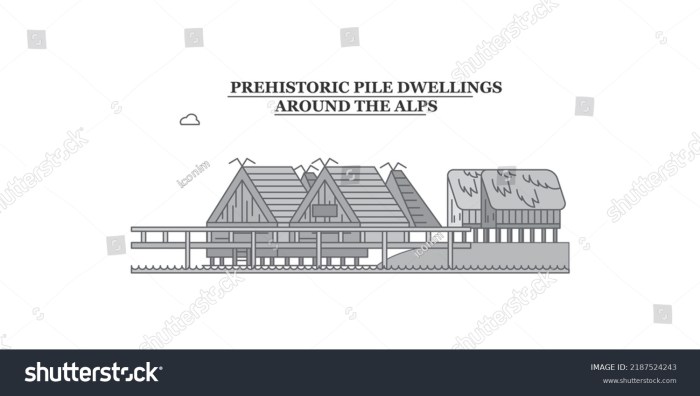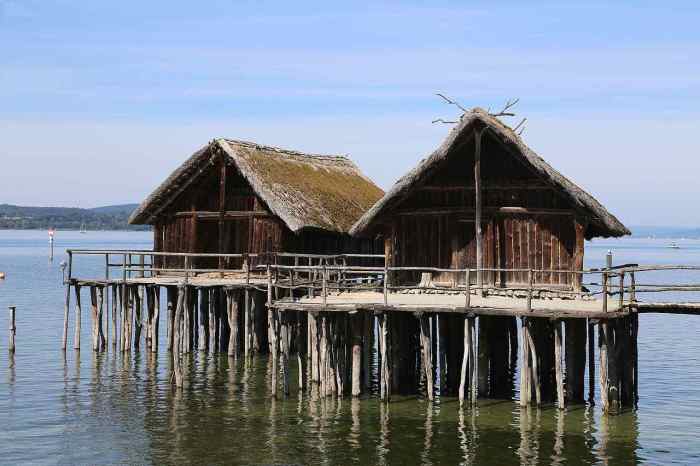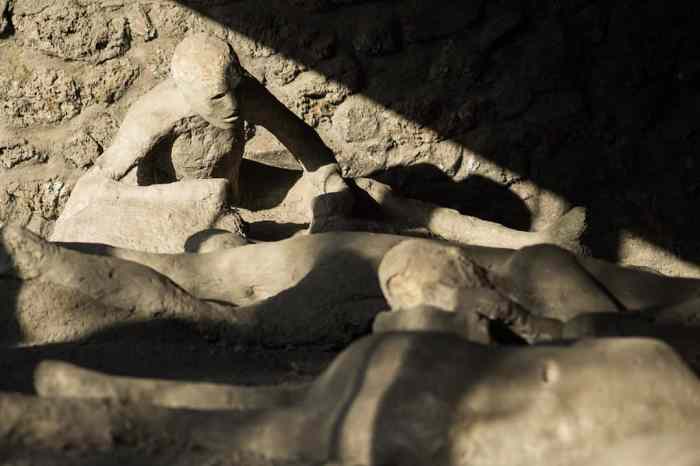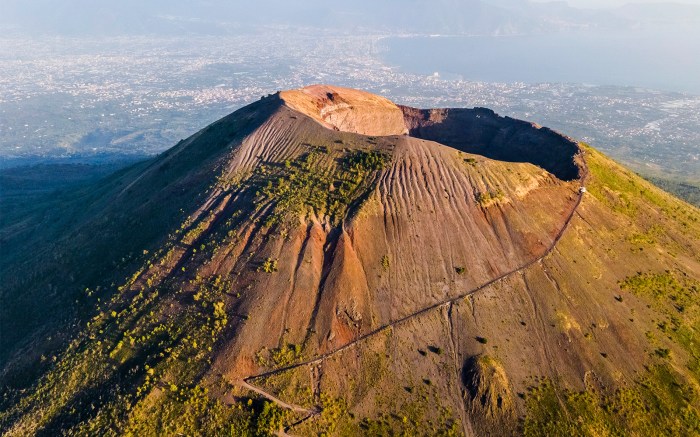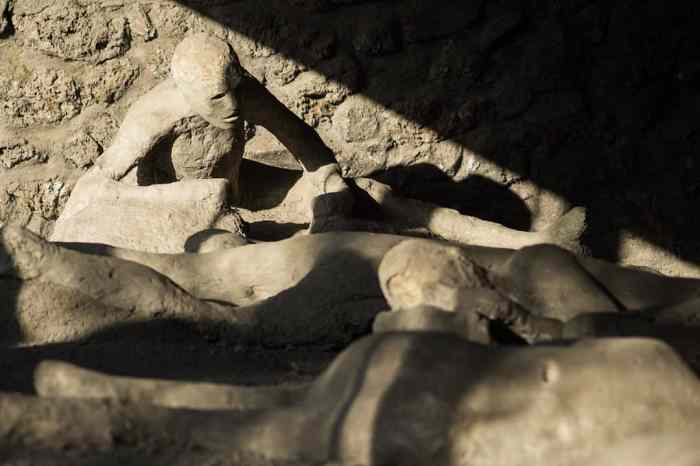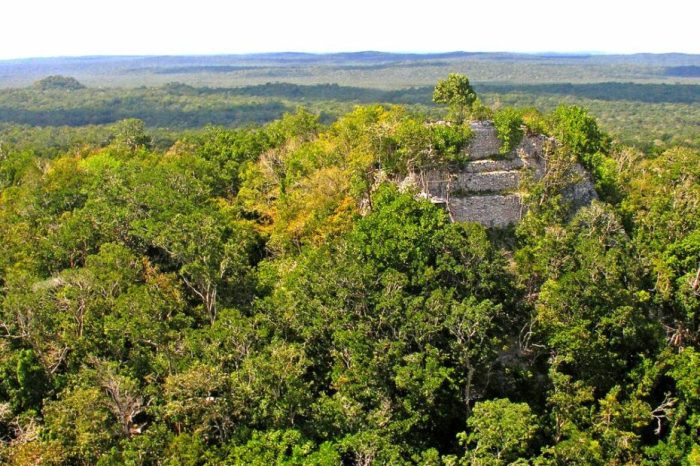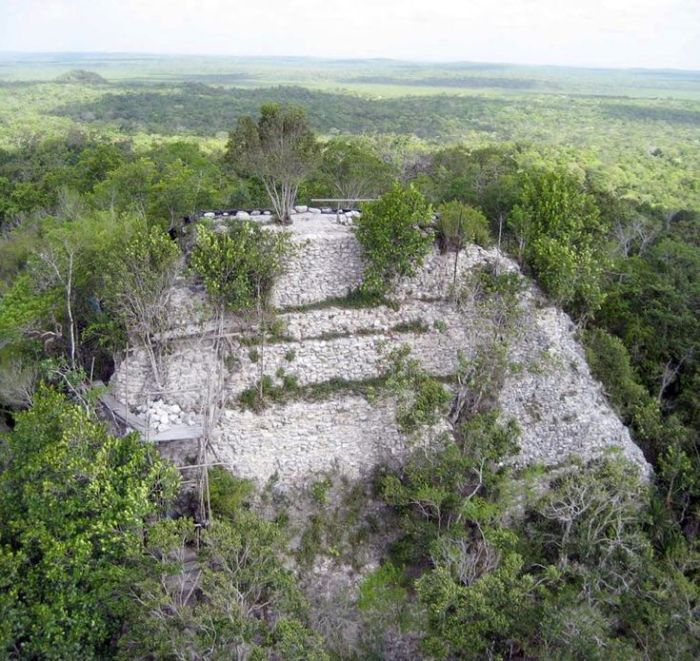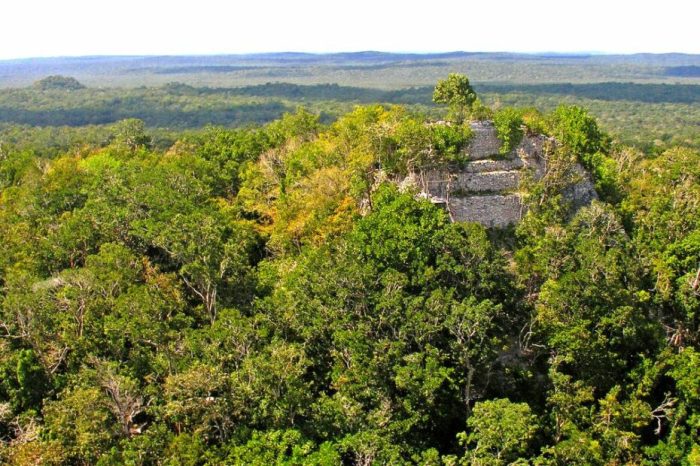143 new Nazca lines discovered in Peru! This incredible archaeological find adds another layer to the mystery surrounding these ancient geoglyphs. These newly unearthed lines, etched into the desert sands, offer a glimpse into the lives and beliefs of the Nazca people, challenging our current understanding of their culture. Early analysis suggests a fascinating variety of shapes and patterns, potentially revealing new information about their astronomical knowledge and social structures.
The discovery process involved a combination of advanced remote sensing techniques and meticulous ground-level verification. This innovative approach, blending modern technology with traditional archaeological methods, is crucial for uncovering hidden treasures in remote regions. The discovery also highlights the ongoing importance of international collaboration in archaeological research, bringing together experts from around the world to understand this unique cultural heritage.
Significance of the Discovery

The recent discovery of 143 new Nazca lines in Peru adds another layer to the enigmatic world of these ancient geoglyphs. These intricate designs, etched into the desert landscape, have captivated archaeologists and the public for decades, offering a glimpse into the beliefs and practices of the Nazca culture. The new finds promise to further illuminate this fascinating chapter of Peruvian history.The Nazca Lines, a UNESCO World Heritage site, are a testament to the ingenuity and artistic talent of the Nazca people.
Their precise purpose remains a subject of ongoing debate, with theories ranging from astronomical alignments to ritualistic ceremonies. The new discoveries, with their unique shapes and patterns, will undoubtedly contribute to a more comprehensive understanding of these ancient practices.
Historical Context of the Nazca Lines
The Nazca culture thrived in the southern coastal region of Peru from approximately 200 BCE to 600 CE. Known for their intricate textiles, pottery, and the iconic Nazca Lines, this civilization left behind a rich cultural legacy. Their unique artistry and the mysteries surrounding the Lines continue to fascinate researchers and visitors alike. The previously known Nazca Lines have been a source of wonder and speculation for over a century.
Importance of Archaeological Discoveries in Peru
Peru is a treasure trove of ancient civilizations, boasting a rich history stretching back millennia. Discoveries like these unearthed Nazca lines shed light on the intricate social structures, religious beliefs, and artistic expressions of these societies. Archaeological discoveries in Peru often offer crucial insights into the evolution of human civilization, particularly in the Andean region. The unearthed Nazca Lines contribute substantially to this understanding, showcasing a previously unknown facet of their cultural expressions.
Potential Implications for Understanding Nazca Culture
The 143 new Nazca lines provide a valuable opportunity to refine existing theories and perhaps even generate new ones about the Nazca people. The patterns and designs of these new lines may offer clues to the cultural practices, beliefs, and social interactions of the Nazca. The sheer variety of shapes, sizes, and potential symbolism of these new finds might point to diverse societal roles and religious practices that were previously unknown.
Just heard about those 143 new Nazca lines discovered in Peru! Amazing! It’s fascinating how much more there is to learn about these ancient mysteries. Speaking of fascinating places, if you’re looking for a unique outdoor adventure, check out some of the great glamping spots in Maine. places to go glamping in maine offer a comfortable and scenic way to experience the beauty of the region.
Back to the Nazca lines, this new discovery really highlights the incredible artistry and dedication of the ancient people who created them.
Scientific Methods Used in Identifying the Lines
The identification of the new Nazca lines employed a combination of ground-based surveys and aerial photography. High-resolution aerial imagery, coupled with detailed ground-truthing, enabled researchers to identify these previously unnoticed geoglyphs. This combination of methods is essential for uncovering hidden or subtle features in vast, open landscapes. Satellite imagery and advanced image processing techniques were employed in this instance to identify previously uncharted geoglyphs.
Potential Impact on Tourism and Cultural Preservation
The discovery of the new Nazca Lines will likely generate increased interest in the region, boosting tourism and economic activity. This, in turn, can provide crucial resources for preserving the existing Nazca Lines and the surrounding archaeological sites. It’s crucial to ensure sustainable tourism practices to protect these fragile cultural heritage sites. The influx of tourists might necessitate enhanced preservation strategies for the existing lines and the newly discovered ones.
Role of International Collaboration in Such Discoveries
International collaborations are vital for supporting research and conservation efforts in remote areas. The exchange of expertise and resources between researchers from various countries plays a critical role in uncovering and interpreting these complex cultural legacies. This discovery highlights the value of shared knowledge and resources in the field of archaeology.
Comparison of New and Existing Nazca Lines
| Line Category | Estimated Age | Characteristics | Potential Meanings |
|---|---|---|---|
| New Lines (143) | Estimated 200 BCE – 600 CE (similar to existing lines) | Varied shapes, sizes, and patterns, some previously obscured by environmental factors. | Possible depictions of celestial events, rituals, or social hierarchies. |
| Existing Lines | Estimated 200 BCE – 600 CE | Wide range of figures and geometric designs, often large-scale. | Diverse interpretations, including astronomical alignments, religious symbols, or representations of animals and humans. |
Characteristics of the New Nazca Lines
The recent discovery of 143 new Nazca Lines in Peru adds a significant layer to our understanding of this ancient civilization’s artistic and cultural expressions. These newly unearthed geoglyphs provide valuable insights into the techniques, motivations, and environmental context surrounding their creation. The diverse array of shapes and patterns, combined with the enduring nature of the desert environment, offer a glimpse into the ingenuity and symbolism embedded within these ancient works of art.These new lines, etched into the arid plains of the Nazca desert, showcase a remarkable variety of shapes and patterns, offering a window into the artistic and cultural world of the people who created them.
The materials and techniques used, coupled with the geographical context, offer insights into the environment, labor, and possibly, the symbolic significance behind these remarkable designs.
The recent discovery of 143 new Nazca lines in Peru is fascinating, adding to the mystery surrounding these ancient geoglyphs. While the intricate designs are undoubtedly significant, it makes one wonder about the potential for hidden meanings. Perhaps the lines weren’t just for visual display, but for something more profound, like a sophisticated communication system, or even a shield from unknown dangers.
Imagine the Nazca people using a form of protection, like the protective gear seen in the Naomi Campbell hazmat suit shield , for a specific purpose related to the lines’ creation. Regardless, the sheer number of newly discovered lines further emphasizes the importance of continued research into the Nazca culture and their mysterious art.
Distinct Shapes and Patterns
The new Nazca Lines exhibit a fascinating range of shapes and patterns. Some resemble stylized animals, including birds and possibly camelids. Others are geometric designs, such as spirals, zigzags, and trapezoids. The variety suggests a complex system of communication or representation. The complexity of some of the newly discovered designs is particularly noteworthy, hinting at a potentially deeper symbolic language than previously appreciated.
These designs may be representations of constellations or astronomical events, mirroring the advanced astronomical knowledge of other ancient cultures.
Materials and Techniques Used
The Nazca Lines were created by removing the dark, iron-oxide-rich surface layer of the desert floor, revealing the lighter-colored subsoil beneath. This technique, which likely involved teams of workers carefully clearing away stones and soil, required significant effort and organization. The consistent quality of the lines, despite their scale, indicates a precise method passed down through generations. The careful preparation and execution of the work reveal the level of technical expertise and dedication of the people who created them.
Comparison to Other Geoglyphs
The new Nazca Lines show parallels to other geoglyphs around the world, highlighting the universal human tendency to create large-scale representations in the landscape. Similar designs and techniques are evident in the Nazca region, suggesting a local tradition. However, comparisons with other geoglyphs across the globe, such as those found in the Nazca region, reveal the potential for cultural exchange and shared artistic impulses.
A deeper investigation into potential influences from other cultures is a key area for future study.
Geographic Location and Environment
The new lines are situated within the Nazca Desert, a high-altitude, arid region in southern Peru. The dry climate, characterized by extremely low rainfall, is crucial for the preservation of the lines. The stable and dry environment has prevented erosion and weathering, allowing these ancient artworks to endure for millennia. This unique environmental context plays a significant role in the preservation of these geoglyphs, as the lack of rainfall is crucial in preventing natural degradation of the lines.
Environmental Factors Influencing Preservation
The unique environmental conditions of the Nazca Desert have played a crucial role in preserving the geoglyphs. The extremely arid climate and lack of significant rainfall have protected the lines from erosion and weathering, allowing them to remain largely intact for millennia. This environmental stability has been instrumental in allowing these artworks to endure through time, providing a window into the past.
Potential Meanings and Interpretations
The symbolic meanings behind the Nazca Lines remain a subject of ongoing debate and research. Some interpretations suggest that the lines were used for astronomical observations, religious ceremonies, or even as a form of communication between communities. The lack of written records makes deciphering their meaning challenging. Further research and analysis, incorporating modern tools and techniques, will potentially offer a deeper understanding of their symbolic and cultural significance.
| Category | Examples |
|---|---|
| Zoomorphic | Birds, camelids |
| Geometric | Spirals, zigzags, trapezoids |
Methods of Discovery
Unveiling the secrets etched into the Peruvian desert requires meticulous investigation. The discovery of 143 new Nazca Lines underscores the importance of innovative approaches to archaeological exploration. These lines, ancient geoglyphs, often remain hidden beneath the surface, requiring sophisticated methods for their identification and documentation.The process of locating these hidden treasures involves a multifaceted approach, blending traditional research with cutting-edge technology.
From initial surveys to the detailed mapping of the newly found lines, each step is crucial to ensuring accurate records and preserving this invaluable cultural heritage.
Remote Sensing Technologies Employed
The identification of these new Nazca Lines leveraged advanced remote sensing technologies. These technologies provided crucial initial insights into the landscape and enabled the detection of potential geoglyphs that might otherwise remain obscured. High-resolution satellite imagery, employing various spectral bands, played a key role in revealing subtle variations in the terrain that could indicate the presence of previously unknown lines.
Employing multispectral imagery allowed for the differentiation between natural features and man-made designs, a critical step in the discovery process. Lidar (Light Detection and Ranging) scans, providing detailed three-dimensional models of the landscape, further refined the identification process, revealing subtle depressions and contours that could be linked to the lines.
Role of Aerial Photography and Satellite Imagery, 143 new nazca lines discovered in peru
Aerial photography, a long-standing tool in archaeological exploration, remains an essential component. High-altitude photographs, combined with detailed ground surveys, provide a comprehensive view of the landscape, allowing researchers to identify potential lines and their characteristics. Satellite imagery, with its ability to capture vast areas at high resolution, has proven invaluable in locating extensive regions with potential Nazca geoglyphs.
The combination of these technologies allows for the creation of a comprehensive dataset of potential sites, leading to a focused approach for further investigation.
Verification and Confirmation Process
The verification and confirmation process of a potential Nazca line involves multiple steps. Initial identification from remote sensing data is followed by ground-truthing, where researchers physically visit the suspected site to confirm the presence of the line and its characteristics. Detailed documentation, using accurate measurements and photographic records, is critical in this phase. Confirmation of authenticity typically requires comparisons with known Nazca lines and historical records to determine the age and cultural context.
Documentation of the Discovered Lines
Accurate documentation of the newly discovered lines is crucial for preservation and future research. A comprehensive record-keeping system ensures that all details, including precise location coordinates, size, orientation, and unique features, are meticulously recorded. High-resolution digital imagery, precise topographic maps, and detailed descriptions are incorporated into the documentation process. This comprehensive documentation ensures that future researchers have access to the necessary information for understanding and interpreting these ancient designs.
Assessing Preservation Status
Evaluating the preservation status of these new lines is essential for their protection. A step-by-step approach is adopted to assess the impact of environmental factors, such as erosion and weathering. This process includes visual inspection, analysis of ground conditions, and potentially employing non-invasive techniques to evaluate the structural integrity of the lines. The preservation status assessment is an ongoing process, requiring periodic monitoring and maintenance strategies.
Procedure for Assessing Preservation Status
- Visual Inspection: A detailed visual examination of the lines, focusing on visible signs of erosion, weathering, or other damage. This includes careful observation of the surrounding terrain and any factors that may be contributing to degradation.
- Ground Condition Analysis: Assessing the physical condition of the ground surrounding the lines, looking for any evidence of instability or changes in soil composition that could affect the lines’ integrity. This includes examining for signs of water runoff and potential areas of high erosion.
- Non-Invasive Techniques: Implementing appropriate non-invasive techniques, such as ground-penetrating radar, to evaluate the structural integrity of the lines without causing any damage. This provides deeper insights into the stability of the lines and the subsurface conditions.
- Monitoring and Maintenance Strategies: Developing a long-term plan for monitoring and maintenance, including regular inspections, preventative measures to mitigate environmental impact, and appropriate management strategies.
Discovery Process Timeline and Teams
| Stage | Timeline | Teams Involved |
|---|---|---|
| Initial Identification (Remote Sensing) | 2023-2024 | Archaeological Survey Team, Remote Sensing Specialists |
| Ground-Truthing and Verification | 2024-2025 | Archaeologists, Geographers, Documentation Specialists |
| Documentation and Analysis | 2025-Present | Researchers, Historians, Conservators |
Potential Interpretations
The recent discovery of 143 new Nazca lines in Peru sparks exciting possibilities for understanding this enigmatic culture. These newly unearthed geoglyphs, etched into the desert landscape, offer a fresh perspective on the potential motivations and symbolism behind the Nazca lines. Understanding the possible interpretations requires careful consideration of the lines’ characteristics, their potential astronomical alignments, and the historical context of the Nazca culture.These newly discovered lines add a layer of complexity to the existing theories surrounding the Nazca culture.
Analyzing these new lines alongside the existing ones, and considering various hypotheses, will help unravel the deeper meaning behind this ancient art form. The significance of these lines lies not only in their sheer number but also in the potential insights they provide into the beliefs, practices, and worldview of the Nazca people.
Various Hypotheses Regarding Purpose and Meaning
The Nazca lines have long been a subject of intense speculation. The diverse shapes and sizes of the lines suggest multiple potential functions. Some theories propose that they served as ceremonial pathways, while others posit that they were astronomical calendars or even forms of communication. Some scholars propose a possible religious significance, connecting the lines to rituals and ceremonies.
Potential Astronomical Significance
The potential astronomical significance of the lines is a compelling area of investigation. Careful analysis of the alignment of the lines with celestial events, like solstices or equinoxes, could reveal a sophisticated understanding of astronomy in the Nazca culture. It is plausible that the lines were used to track the movements of celestial bodies, aiding in agricultural practices or religious observances.
Historical examples of cultures using astronomical alignments for calendar systems or rituals offer compelling parallels.
Comparison to Existing Theories about the Nazca Culture
Comparing the new interpretations with existing theories about the Nazca culture is crucial for a comprehensive understanding. Existing theories, which include interpretations of the lines as ritual sites, as a form of communication, or as part of a larger religious complex, need to be reassessed in light of the new discoveries. For instance, the recent discoveries might provide evidence supporting or refuting previous hypotheses about the specific roles of the lines in Nazca society.
The recent discovery of 143 new Nazca lines in Peru is absolutely fascinating! It’s amazing to think about the vastness of these ancient geoglyphs. Planning a trip to see them? Consider checking out the top-rated all inclusive resorts in the south for a luxurious stay near the area. best all inclusive resorts in the south are perfect for relaxing before or after exploring the lines.
The scale of the Nazca lines, with this latest discovery, just adds another layer of wonder to this already incredible historical site.
Different Perspectives on the Cultural Context
Understanding the cultural context surrounding the lines is paramount. The Nazca culture flourished in a unique environment, and their beliefs and practices were likely influenced by their surroundings. Considering factors like the regional geography, the climate, and the social structures of the time can provide additional insights into the potential meaning of the lines. Different perspectives on the cultural context can illuminate the possible purposes of these geoglyphs.
Methods Used to Study the Lines and Their Potential Meanings
Archaeological methods such as aerial photography, ground-penetrating radar, and analysis of soil composition are crucial for understanding the lines. These methods provide detailed information about the lines’ dimensions, construction techniques, and potential relationship to surrounding features. Further studies of the surrounding environment, including analyzing the local flora and fauna, can provide clues about the daily lives of the Nazca people and their interactions with the landscape.
Such methods provide valuable insights into the potential meanings behind the lines.
Table of Potential Interpretations
| Interpretation | Evidence from Archaeological Research |
|---|---|
| Ceremonial Pathway | Evidence of ritualistic artifacts found near some lines. |
| Astronomical Calendar | Alignment of some lines with celestial events. |
| Communication System | Varied shapes and sizes of the lines, potential connection to other regions. |
| Religious Symbolism | Presence of symbolic motifs in some lines. |
Role of Local Communities in Interpreting the Lines
Local communities hold invaluable knowledge and perspectives regarding the Nazca lines. Their traditional understanding of the land, their oral histories, and their cultural practices can provide unique insights into the lines’ potential meanings. Involving local communities in research and interpretation is essential for a comprehensive understanding of the Nazca lines. Their historical knowledge is critical in the analysis of the lines.
Implications for Research and Preservation
The recent discovery of 143 new Nazca Lines presents a significant opportunity to deepen our understanding of this ancient civilization and their enigmatic artistic expressions. This newfound wealth of information not only enhances our existing knowledge but also necessitates a comprehensive approach to preservation, ensuring the longevity of these cultural treasures for future generations. The meticulous analysis of these newly discovered lines will offer invaluable insights into the symbolic language, rituals, and daily life of the Nazca people.The discovery necessitates a reassessment of our understanding of Nazca culture, potentially revolutionizing our interpretation of their societal structures and beliefs.
The sheer volume of new lines provides an unprecedented opportunity to identify patterns, motifs, and connections that might have been overlooked in previous studies. This will, in turn, stimulate further research into the cultural, astronomical, and social significance of the Nazca Lines.
Impact on Ongoing Nazca Culture Research
The new lines offer valuable data points to refine existing theories about the purpose and meaning behind the Nazca Lines. Comparisons between the newly discovered and previously documented lines can reveal subtle shifts in symbolic representation over time. This detailed analysis will enrich our understanding of the evolution of Nazca artistic expression and societal changes.
Implications for the Preservation of the Nazca Lines
The expansion of the Nazca Lines landscape requires a re-evaluation of the existing preservation strategies. The increased area to protect necessitates a broader and more comprehensive approach to safeguard these cultural heritage sites.
Potential Need for Additional Conservation Efforts
The increased visibility of the Nazca Lines due to the new discoveries necessitates the implementation of advanced conservation methods. This includes measures like enhanced surveillance, visitor management systems, and the development of more robust infrastructure to support the protection of these sensitive sites. For example, the implementation of designated walkways and controlled access zones can minimize the impact of human activity on the delicate desert environment.
Potential Threats to the Preservation of the New Lines
Potential threats include, but are not limited to, illegal tourism activities, improper waste disposal, and the impact of climate change, including increased desert temperatures and fluctuations in rainfall patterns. These factors can lead to soil erosion and damage to the lines. Improperly managed tourism can also lead to the physical degradation of the lines through accidental contact. Additionally, the construction of new roads or infrastructure near the lines poses a risk of damage.
Plan for Long-Term Preservation and Protection of the New Nazca Lines
A multi-faceted strategy is required to ensure the long-term preservation of the new lines. This strategy should incorporate the following key elements:
- Enhanced Surveillance: Employing advanced technologies such as drones and satellite imagery for continuous monitoring of the area to detect any signs of unauthorized activities.
- Improved Visitor Management: Implementing strict visitor guidelines, controlled access points, and well-marked trails to minimize the impact of human traffic on the delicate environment.
- Conservation Strategies: Employing advanced techniques to combat climate change effects, such as soil stabilization measures, and implementing proper waste disposal systems.
- Community Engagement: Involving local communities in the preservation efforts through educational programs and job creation initiatives to foster a sense of ownership and responsibility.
- International Collaboration: Partnering with international organizations and experts to share knowledge and resources to ensure effective preservation strategies.
Impact on Future Research in the Region
The discovery of these new lines will encourage further archaeological explorations in the surrounding areas. The new lines may reveal additional clues about the Nazca civilization and the region’s history. This may lead to the identification of new settlements or archaeological sites that have yet to be discovered.
Conservation Strategies
To illustrate effective conservation strategies, consider the example of the Nazca Lines. The establishment of a buffer zone around the lines, restricting access and promoting sustainable tourism, is a key element. Employing non-invasive monitoring methods, like remote sensing, can identify potential threats before they cause significant damage. Furthermore, educating the public about the importance of preserving the lines can foster a sense of shared responsibility and encourage responsible tourism practices.
Visual Representation: 143 New Nazca Lines Discovered In Peru
The newly discovered Nazca Lines offer a unique opportunity to appreciate the ingenuity and artistry of the ancient Nazca culture. Visual representations, ranging from artistic renderings to detailed technical diagrams, play a crucial role in understanding their form, function, and location in relation to the surrounding landscape. These visualizations are essential tools for both researchers and the public to engage with and comprehend these enigmatic geoglyphs.The following sections detail the various visual representations used to depict the newly discovered Nazca Lines, highlighting their significance in deciphering these ancient artistic expressions.
These visual tools allow for a deeper engagement with the intricate details and patterns within the lines, ultimately contributing to a more holistic understanding of the Nazca culture.
Artistic Renderings
The artistic interpretation of the newly discovered Nazca Lines aims to capture the essence of their forms and patterns. These renderings, while not precise replicas, evoke the overall shapes and compositions of the lines, making them accessible to a wider audience. They often utilize simplified or stylized depictions of the lines to focus on the aesthetic and symbolic elements, making them more visually engaging.
Technical Diagrams
Technical diagrams of the Nazca Lines are essential for a precise understanding of the geoglyphs’ dimensions and intricate details. These diagrams, often accompanied by scaled drawings, provide a detailed view of the lines’ precise shapes and their relation to the surrounding terrain. The use of specific technical measurements and grid systems allows researchers to analyze the proportions, angles, and spacing of the lines with precision, leading to a more thorough analysis.
Infographic: Location of New Lines
This infographic visually displays the location of the newly discovered Nazca Lines in relation to the existing ones. Utilizing a map of the Nazca desert, the infographic highlights the precise coordinates of the new lines with clear markers, enabling a quick understanding of their geographical distribution. Color-coded representations of the new and existing lines facilitate easy identification and comparison, allowing for a comprehensive spatial analysis of the site.
The infographic clearly illustrates the overall distribution pattern, revealing any potential clusters or spatial relationships between the new and old lines.
High-Quality Image of a Specific Line
A specific newly discovered line, resembling a stylized humanoid figure, is depicted in a high-resolution image. The image emphasizes the intricate details of the figure, showcasing its unique features, such as the elongated limbs and stylized facial elements. The contrast between the line and the surrounding desert terrain is prominent, highlighting the line’s distinct form and its integration within the landscape.
The image captures the line’s precise form, allowing viewers to appreciate the precision and skill of the Nazca artists.
Detailed Description of a Line or Group of Lines
The newly discovered lines exhibit a striking resemblance to stylized animal figures, including birds, and geometric shapes. Their forms are well-defined and their Artikels exhibit an intricate level of detail, showcasing a remarkable level of precision in their creation. The lines exhibit an almost surreal quality, standing out distinctly against the monotonous desert landscape. The overall effect creates a captivating and thought-provoking visual experience, drawing viewers into the world of the ancient Nazca culture.
Table: Locations and Types of New Lines
This table displays the locations and types of newly discovered Nazca Lines. The table clearly categorizes the lines, distinguishing between animal figures, geometric patterns, and other symbolic representations. This organized presentation facilitates the comparison of the various lines and provides a clear overview of their characteristics.| Location | Type | Description ||—|—|—|| Southern Nazca Plain | Animal Figure | Stylized bird || Central Nazca Plain | Geometric Pattern | Complex interweaving lines || Northern Nazca Plain | Animal Figure | Human-like figure |
3D Model Representation
A 3D model of a specific Nazca line, a hummingbird, provides a unique perspective of its three-dimensional form. The model allows for interactive exploration, enabling viewers to rotate and observe the line from multiple angles, fully appreciating its intricate details. The model effectively communicates the depth and complexity of the line’s structure, offering a novel way to comprehend its design.
Epilogue
The discovery of 143 new Nazca lines in Peru represents a significant step forward in our understanding of this fascinating civilization. The meticulous research and innovative methods used in uncovering these ancient treasures are a testament to the power of human ingenuity and collaboration. This discovery promises to enrich our knowledge of the Nazca people and their remarkable achievements, inspiring further research and safeguarding this invaluable cultural heritage for generations to come.

